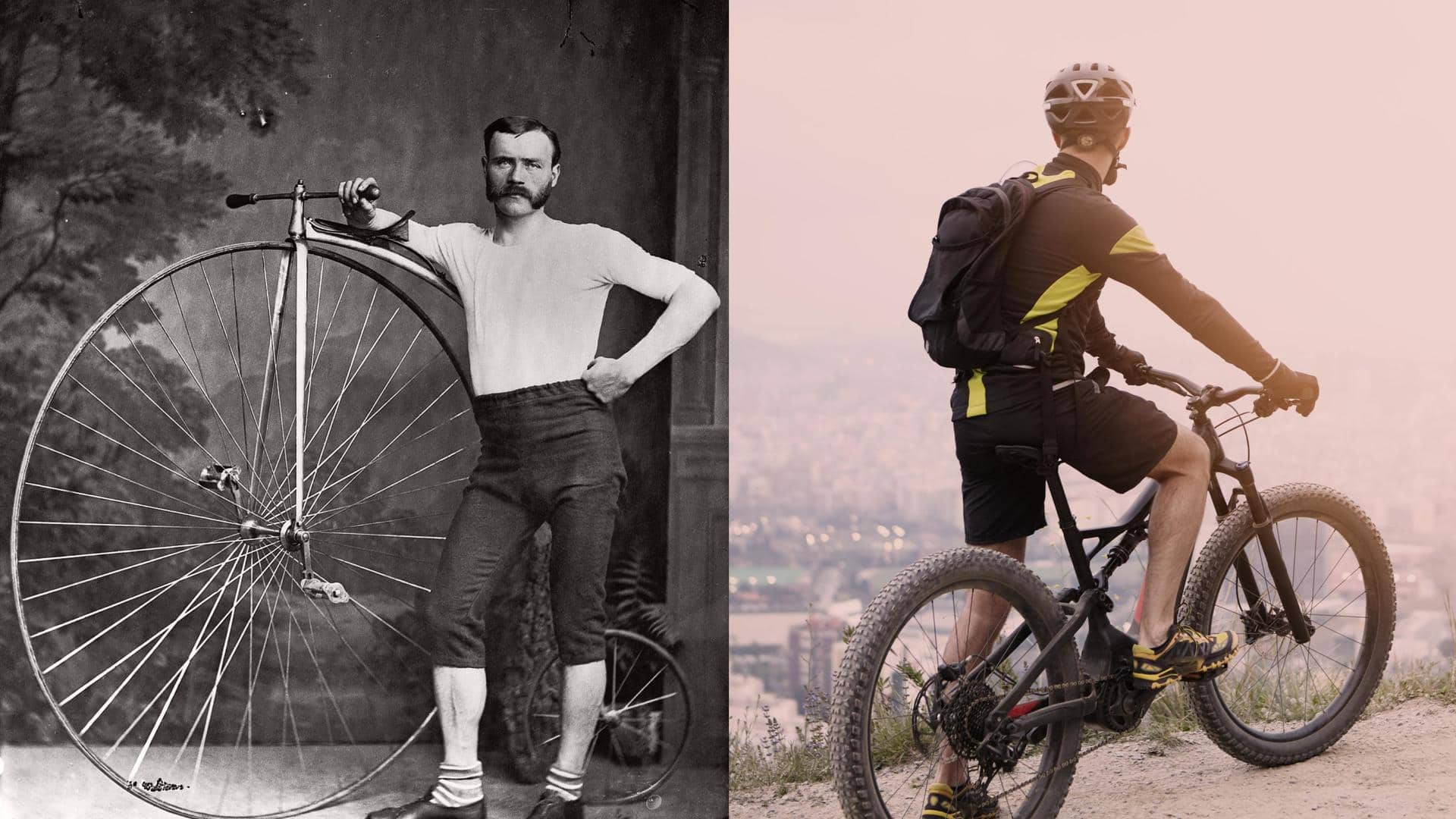
World Bicycle Day: How bicycles have evolved over the years
What's the story
On World Bicycle Day, let's go back in time to see how bicycles have changed over the years. Bicycles have been around for about 600 years, and they've undergone significant changes to become the bicycles we know today. People have made significant improvements to how it looks and works. So, keep reading as we pedal through the timeline of the bicycle's captivating history!
15th century
15th century: Giovanni Fontana creates the first land vehicle
Back in 1418, Giovanni Fontana created the first land vehicle powered by humans. This unique invention had four wheels and used a clever system of ropes and gears to make it move. Jumping ahead to 1493, the famous Leonardo da Vinci is said to have imagined the concept of a vehicle that can run on just two wheels although he couldn't actually build it.
19th century
1817: Laufmaschine was invented
In 1817, Baron Karl Von Drais of Germany designed and built a wooden vehicle with two wheels that people could straddle and move by walking quickly. It was invented during a time when there weren't enough oats for horses so that people can travel without relying on them. He called it the "running machine" or laufmaschine. It was like a bike but without pedals.
19th century
1839: The first self-propelled bike was introduced
In Scotland, a blacksmith named Kirkpatrick Macmillan invented the first bike that could move by itself. It worked by using swinging cranks on the front wheel, which made rods move and push levers connected to the back wheel. The bike was quite heavy, weighing around 56 pounds, so the riders needed to be strong and fit to ride it.
19th century
1863: When biking was a bumpy affair
In Paris, a person named Pierre Michaux created something called the Michaux Velocipede. The Velocipede featured pedals and cranks on the front wheel. It was the world's first mass-produced riding machine. It earned the name "boneshaker" because of its sturdy frame and wheels with iron bands. Riding it was a bumpy and jarring experience, shaking the bones of the riders. Hence the name!
19th century
Mid-1870s: The age of giant front wheels
The "penny-farthing" or "high wheeler" was the first-ever machine to be called "bicycle." It was a type of bicycle with a large front wheel and a much smaller rear wheel that became popular after the "boneshaker." It became a symbol of the late-Victorian era and was mostly used by adventurous young men because it was quite risky to ride.
19th century
1880s: Safety bicycle becomes popular, especially among women
In the 1880s, a 'safety bicycle' emerged as a popular alternative to penny-farthing. This led to a bike frenzy because the safety bicycle was lighter, cheaper, and easier to ride. Unlike penny-farthing, the rider's feet were closer to the ground, thereby reducing the risk of accidents. It was around this time when the first ever geared bicycle was invented by John Kemp Starley.
Olympics
1890s: Mass production starts, Olympics welcomes cycling
The 1890s was the golden age for cycling, both as a means of transport and sport. It was during this decade that well-known bike companies like Raleigh and Schwinn started. This made bicycles more available to people and they loved it so much that bicycle racing gained popularity. It was eventually included as an event in the first modern Olympic games in 1896.
20th century
1980s: Mountain bikes make their debut
In the mid-1970s, the bicycle craze was at its peak because petrol prices were very high. During that time, the focus was on designing sporty bicycles. In the 1980s, people started using bikes that could go on any type of terrain, not just roads. This led to the rise of mountain bikes and BMX bikes, which had multiple gears and were lighter to ride.
21st century
21st century: Cutting-edge bicycles make the cut
Bicycle frames have remained similar for a long time, however, new materials like titanium and carbon fiber revolutionized the industry. These space-age materials made bicycles much lighter and stronger than the old iron and wooden models. Bike styles also changed over time, with specific designs catering to different types of riding: mountain bikes, road bikes, hybrids, cruisers, and more.
E-bicycles
The advent of eBikes marks a new era in cycling
In the 1990s, the first eBikes with pedal-assist technology appeared. An inventor named Michael Kutter from Switzerland created a throttle-less eBike that used pedaling to control the power. Around the same time, Yamaha developed a similar bike in 1993. However, it's only in recent times that these battery-powered bicycles gained popularity and become more widely adopted by people.